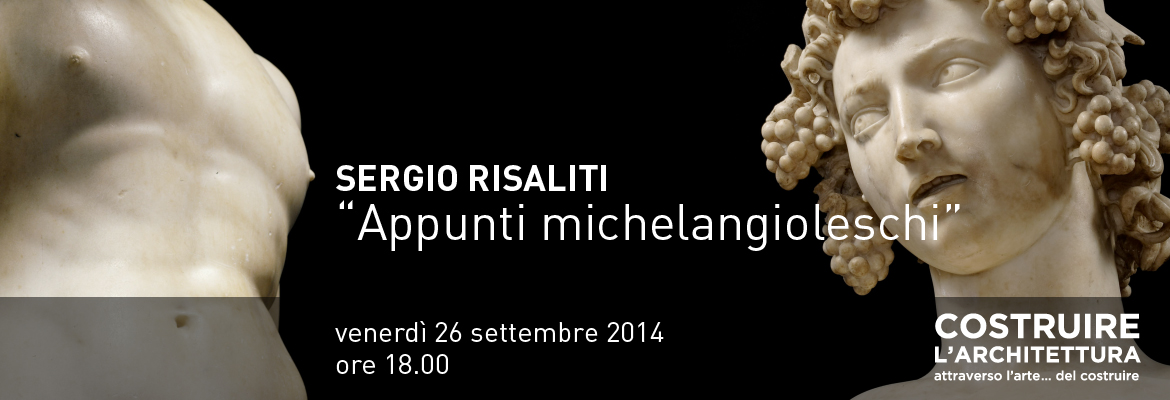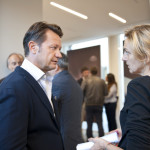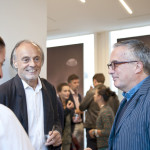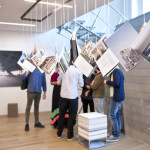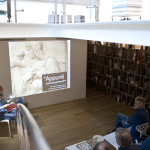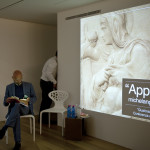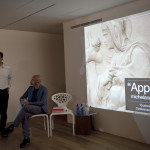Venerdì – 26 settembre 2014 – ore 18.00
Costruire l’architettura – Sergio Risaliti “Appunti michelangioleschi”
Sergio Risaliti
Quanta fatica costa l’arte? Quale acuto sguardo mnemonico è richiesto all’artista per cogliere e rielaborare i suggerimenti che i maestri d’ogni tempo lasciano impressi nelle loro opere?
Sergio Risaliti ci ha condotti in un affascinante viaggio, ricco di suspence, in alcuni capolavori di Michelangiolo. Noti, celebrati, ripetutamente e a lungo studiati e dibattuti da artisti, storici, critici. Ma “qualcosa sfugge sempre”. Il capolavoro ha questa natura, non lo si può mai finire di studiare. Si offre di volta in volta alle più sorprendenti scoperte. È lo stesso Michelangiolo a saperlo e a osservare e memorizzare le opere altrui. Così pure si possono scoprire presenze michelangiolesche, esplicite e implicite, nascoste o esibite, nei gradi artisti contemporanei.
Ma c’è di più. Come altri protagonisti del Rinascimento – lo ha confermato, intervenendo a sua volta, con dovizia di particolari Riccardo Bruscagli – il grande artista era uomo che coltivava le diverse arti, e non solo le figurative, così come i saperi liberali più alti quali la matematica, la filosofia. “Qualcosa sfugge sempre” ha anche un senso filosofico espresso da Michelangiolo in varie opere. Paradigmatica è la Battaglia dei Centauri. Non è né giovanile, né della maturità – ci dice Risaliti – vi ha lavorato tutta la vita, senza mai compierla, testimoniando l’impossibilità di tradurre in una forma finita l’infinito, ossia ciò che sempre eccede, che non si fa mai catturare.
Francesco Ventura
Friday – sep 26th 2014 – 6.00 pm
Building the architecture – Sergio Risaliti “Michelangio’s notes”
Sergio Risaliti
How much effort does art take? How keen must an artist’s mnemonic eye be to grasp and build on the ideas that the master artists of every era leave behind in their works?
Sergio Risaliti took us on a fascinating, exciting journey through some of Michelangelo’s masterpieces. Though they are well known, celebrated and studied again and again at length, discussed by artists, historians and critics… but “something always escapes.” Such is the nature of a masterpiece. We can never finish studying it. Every time we return it offers unexpected discoveries. Michelangelo himself knew this, observing and memorizing the works of others. Likewise, we can find signs of Michelangelo — whether explicit or implicit, hidden or on display — in great contemporary artists.
And, like other important figures of the Renaissance — as Riccardo Bruscagli confirmed with his meticulous contribution — Michelangelo was a man who cultivated many different arts, not only figurative art, studying advanced areas of knowledge like mathematics and philosophy. “Something always escapes” also has a philosophical sense that Michelangelo expressed in many works. The Battle of the Centaurs is an excellent example of this. Neither a work from his early or late years, as Risaliti told us, he worked on it his whole life without ever finishing it, demonstrating that it is impossible to translate into a finite form an infinite form — that which is always excessive, which never lets itself be captured.
Francesco Ventura
-
© Valentina Muscedra
-
© Valentina Muscedra
-
© Valentina Muscedra
-
© Valentina Muscedra
-
© Valentina Muscedra
-
© Valentina Muscedra
-
© Valentina Muscedra
-
© Valentina Muscedra
